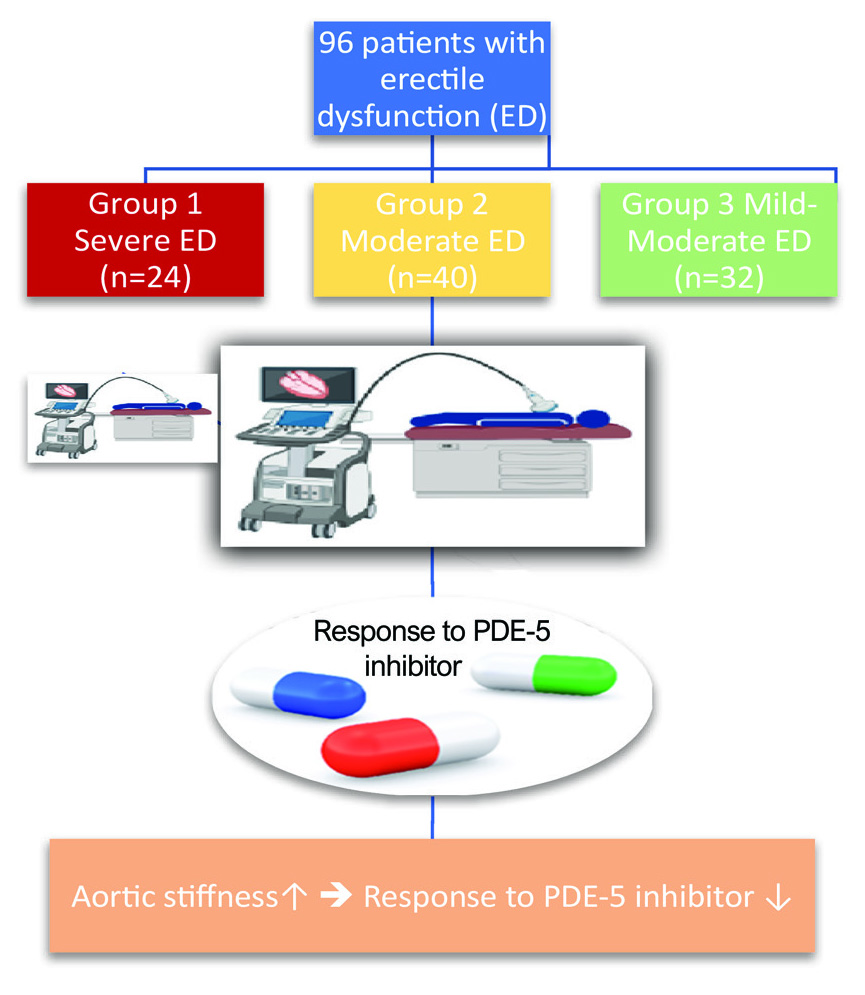Arq. Bras. Cardiol. 2024; 121(3): e20230514
Role of Aortic Stiffness in Predicting Response to Phosphodiesterase-5 Inhibitors in the Treatment of Erectile Dysfunction
This Original Article is referred by the Short Editorial "Aortic Stiffness and the Response to Phosphodiesterase-5 Inhibitors in Patients Receiving Treatment for Erectile Dysfunction: Predictive Role or an Epiphenomenon?".
Abstract
Background:
It is known that aortic stiffness (AS) increases in patients with erectile dysfunction (ED). Phosphodiesterase type-5 (PDE-5) enzyme inhibitors are used in the treatment of ED, and patients’ responses to this treatment may vary.
Objectives:
We aimed to investigate the role of AS in predicting the response of patients planned to take PDE-5 enzyme inhibitors due to ED.
Methods:
A total of 96 male patients with ED were included in the study. The International Index of Erectile Function (IIEF) questionnaire was used to evaluate the presence and severity of ED and the response to treatment. Transthoracic echocardiography was used to evaluate AS.
Results:
There was a statistically significant difference between the aortic strain and aortic distensibility values of the study groups (p<0.001). The delta IIEF score had a high level of positive correlation with aortic strain (p<0.01, r=0.758) and a moderate level of positive correlation with aortic distensibility (p<0.01, r=0.574).
Conclusion:
We determined that in patients with ED, aortic strain and aortic distensibility measured non-invasively using transthoracic echocardiography are important parameters in predicting patients’ response to PDE-5 inhibitor therapy.
480

